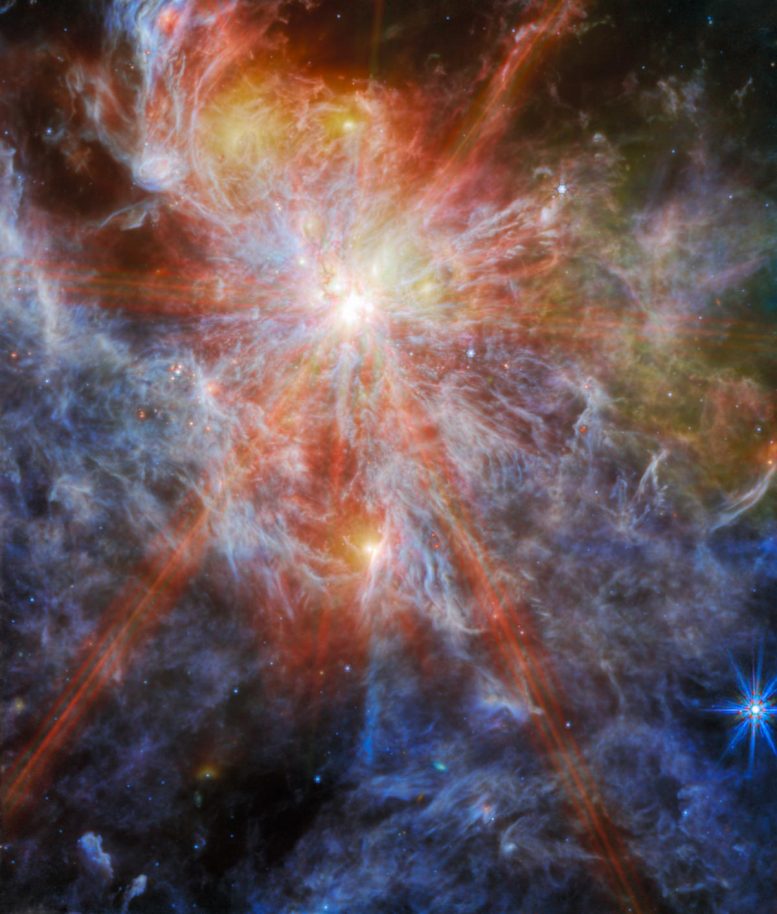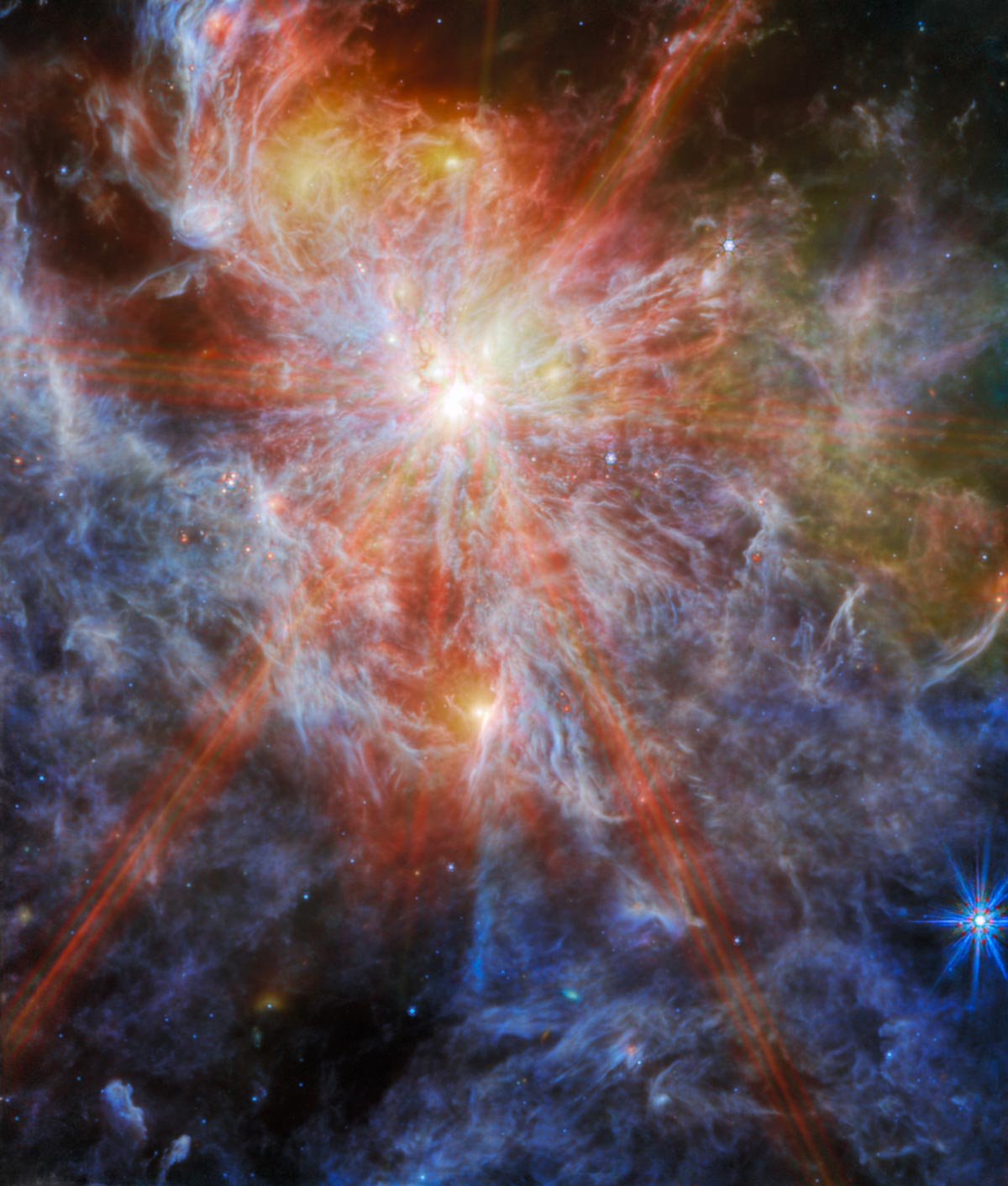
The James Webb Space Telescope has captured a stunning image of N79, a vibrant star-forming region in the Large Magellanic Cloud, highlighting its potential as a smaller version of the Tarantula Nebula. This observation, which detects glowing gas and dust in the region through mid-infrared light, provides valuable information about star formation processes and chemical compositions in the early universe, which differ markedly from those in the Milky Way. Image source: ESA/Web, NASA and CSA, OR. Nayak, M. Mixner
the James Webb Space Telescope It reveals the inner workings of N79, a key star formation region in the LMC, showcasing its efficiency and chemical uniqueness compared to milky way.
This image from the James Webb Space Telescope shows the H II region in the Large Magellanic Cloud (LMC), a satellite galaxy of our Milky Way. This nebula, known as N79, is a region of ionized interstellar atomic hydrogen, captured here by Webb's Mid-InfraRed Instrument (MIRI).
N79 is a massive star-forming complex extending about 1,630 light-years in the generally unexplored southwestern region of the LMC. N79 is usually seen as a smaller version of 30 Doradus (also known as the Tarantula Nebula), one of Webb's recent targets. Research suggests that N79 has a star formation efficiency exceeding 30 Dorados by a factor of two over the past 500,000 years.
This image focuses on one of the three giant molecular cloud complexes, dubbed N79 South (S1 for short). The distinctive “starburst” pattern surrounding this bright object is a series of diffraction spikes. All telescopes that use a mirror to collect light, as Webb does, have this type of artifact that arises from the telescope's design.
In Webb's case, the six largest starburst protrusions appear due to the hexagonal symmetry of Webb's 18 primary mirror segments. Such patterns are only noticeable around compact and very bright objects, where all the light comes from the same place. Most galaxies, although they appear very small to our eyes, are much darker and more diffuse than a single star, and therefore do not show this pattern.
Webb's Mid-Infrared Insights into Star Formation
In the longer wavelengths of light captured by MIRI, Webb's view of N79 shows glowing gas and dust in the region. This is because mid-infrared light is able to reveal what is happening deeper within the clouds (while shorter wavelengths of light will be absorbed or scattered by dust grains in the nebula). Some still-contained protostars are also visible in this field.
Star-forming regions like these are of interest to astronomers because their chemical composition is similar to that of giant star-forming regions observed when the universe was only a few billion years old and star formation was at its peak. The star-forming regions of our Milky Way Galaxy do not produce stars at the same massive rate as N79, and they have a different chemical composition. Webb now provides astronomers with the opportunity to compare and contrast observations of star formation in N79 with deep telescope observations of distant galaxies in the early universe.
These observations of N79 are part of Webb's program that studies the evolution of circumstellar disks and star-forming envelopes over a wide range of mass and at different evolutionary stages. Webb's sensitivity will enable scientists to detect planet-forming dust disks for the first time around stars with a mass similar to that of our Sun at the LMC distance.
This image includes 7.7 micron light shown in blue, 10 microns in cyan, 15 microns in yellow, and 21 microns in red (770 W, 1000 W, 1500 W, and 2100 W filters, respectively).

“Typical beer advocate. Future teen idol. Unapologetic tv practitioner. Music trailblazer.”







More Stories
Boeing May Not Be Able to Operate Starliner Before Space Station Is Destroyed
How did black holes get so big and so fast? The answer lies in the darkness
UNC student to become youngest woman to cross space on Blue Origin